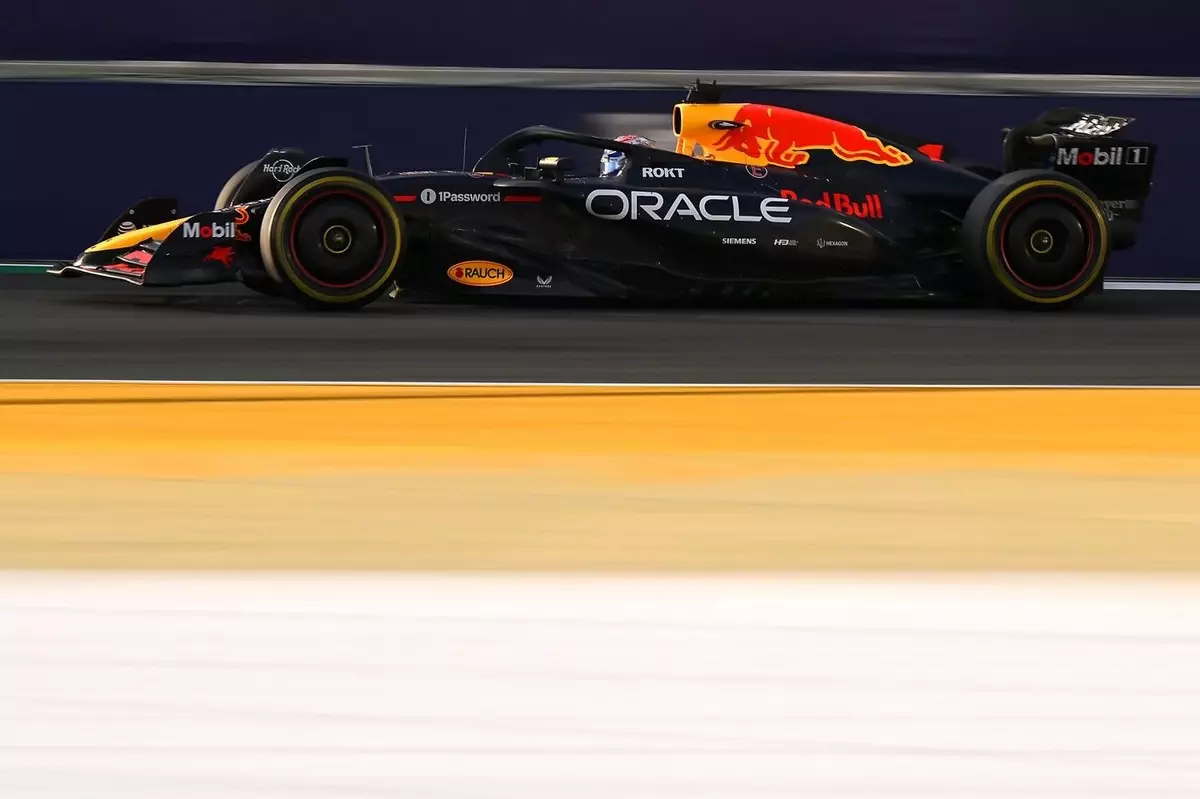In the realm of Formula 1, few teams have been as dominant in recent years as Red Bull Racing. However, the narrative surrounding them is shifting. Instead of celebrating their drivers’ victories, the focus has turned to a growing list of internal struggles that could threaten their illustrious status. The image portrayed by team principal Christian Horner—a confident leader amidst turmoil—stands at odds with the perceived chaos lurking beneath the surface of the organization. The phrase “Crisis? What Crisis?” evokes nostalgia for political headlines, yet it resonates troublingly with current Red Bull sentiments. While Max Verstappen is remarkably close to reclaiming the world championship, the questions surrounding the team’s coherence are far more pressing than a simple title race.
Urgency in the Paddock: Behind Closed Doors
Rumors of “crisis meetings” abound as the team gathers in the wake of disappointing performances. The urgency displayed by Horner and his engineers in Bahrain exemplifies a reactive culture within the organization. This move to expediently address concerns may suggest a fractured approach to problem-solving, where the team feels compelled to act rather than adopting a strategic long-term philosophy. The optics alone of a hastily convened strategy meeting after a race hint at an unsettling truth: internal alarm bells are ringing.
This urgency has not gone unnoticed by competing teams, who are keenly aware of Red Bull’s trouble with tying simulated performance metrics to actual on-track results. The situation becomes all the more precarious as competitors exploit any signs of weakness, illustrating the power dynamics at play in the high-stakes world of F1. A critical observer might surmise that Red Bull’s efforts to portray a calm front may be more of a façade than a reality.
The Dichotomy of Performance: A High-Risk Game
As the 2023 season progresses, the juxtaposition of sporadic performance with systemic instability risks Red Bull’s credibility in the paddock. Verstappen’s unexpected win in Japan showcased the car’s potential, yet, with the car’s unpredictable nature—a characteristic that the team itself cannot fully explain—even triumphs become hollow victories. The specter of correlation problems looms large, casting shadows over what might otherwise be heralded as advancements.
Furthermore, during practice sessions in Jeddah, Verstappen’s and teammate Yuki Tsunoda’s slower lap times fueled suspicions rather than reassuring fans of the car’s reliability. On one hand, the team attempts to downplay concerns; on the other, the mounting evidence suggests a profound inconsistency that cannot merely be chalked up to the vagaries of timing or setup. The coherence between expectations from simulation and reality stands as a crucial marker of performance. When a team struggles to bridge that gap, implicit issues within the team’s technical apparatus and strategy demand scrutiny.
The Infrastructure Dilemma: Wind Tunnels in Disrepair
Addressing these performance inconsistencies inevitably brings up the continued reliance on an archaic wind tunnel, a legacy from the Cold War era. Horner’s frequent mention of this relic is not just routine; it underlines a critical vulnerability in Red Bull’s engineering capabilities. A comprehensive analysis reveals that while the team has enjoyed periods of dominance, an antiquated infrastructure hampers their ability to innovate and adapt to the evolving landscape of F1. A new wind tunnel—announced earlier this year—holds promise for future improvements, but time is of the essence.
The challenges posed by weather fluctuations complicate matters further, introducing variables that obscure the path to improvement. How can a team meaningfully trial aerodynamic solutions if the foundational tools are compromised? Structural upgrades are often painstaking and can drain resources, both financial and intellectual. Acknowledging the urgent need for better testing facilities reflects a commitment to self-improvement, but it also exposes the cracks in an organization that was once viewed as invincible.
The Path Forward: Balancing Intellect and Innovation
It is not enough to promise new developments; tangible results must permeate from the drawing board to the asphalt. The notion of iterative improvements is commendable, yet—without addressing the connection between simulations and on-track performances—each attempted cure runs the risk of being misguided. The patience of Verstappen, arguably among the sport’s most talented drivers, may soon wear thin as he awaits a car that not only performs but also communicates effectively with its driver.
Straddling the line between hope and vexation, the intrinsic narratives of Red Bull Racing reveal an organization desperately seeking clarity in the fog of uncertainty. Drawing on their rich history, the team must confront these modern challenges head-on, deploying both intellect and innovation in pursuit of redemption. As the proverbial wheels keep turning, the realization persists that Formula 1, much like any high-stakes sport, thrives not just on victories but also on the ability to address and rectify shortcomings before they spiral into irrelevance.


Leave a Reply